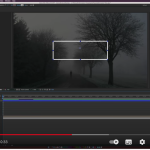How Technology is Revolutionising the Architecture World

Technology has changed nearly everything about the way that people in society exist and function. From smartphones to the Internet, technology has transformed the world in just a few decade’s time. For architects, home builders and home designers, technology has taken a front seat in the experience of designing and building a structure. From start to finish, technology affects the way that architects design buildings and even the way that clients experience the design process. Technology can improve building efficiency and durability while making it easier for architects to more accurately render a building design.
Smart Technology Affects Home Designs and Building Designs
Clients now demand smart technology in their homes and buildings. Smart technology can be used to increase security, improve comfort and heighten efficiency. Smart HVAC systems, security systems and lighting systems make homes more intuitive and more beautiful. Now architects are integrating smart technology into their designs to meet customer demand.
While older homes and buildings are being outfitted with these new products retroactively, it can be hard to seamlessly integrate smart technology into an older structure. Smart technology works perfectly with new buildings because the buildings were designed with smart technology in mind.
Climate Change Predictive Software
Climate change affects the environment where buildings exist, and therefore, will affect the way the buildings themselves perform. The new software allows architects to predict the way that differences in climate will affect a building before it is ever made. This enables architects to create more flexible, durable structures. Using specialised software tools, architects can create buildings that will last longer and function better over a period of decades.
Virtual Reality Makes Models More Realistic Than Ever
In the past, clients who hired an architect would be dependent on 3D models and 2D renderings to view the product before it was built. While these renderings can get the job done, there are limitations. 3D models and 2D drawings can leave clients wondering about their finished product. Now architects use virtual reality headsets to allow clients to explore a rendering to their heart’s content. People who hire an architect to design a home, building or home remodel can use the VR headset to walk in the front door, explore the entryway, walk down hallways, open closets, look out windows and experience first-hand what it would be like to walk around in the structure.
Photo-Realistic Renderings Create a Colorful Picture of Finished Product
Virtual reality has changed client presentations, while photo-realistic renderings have changed the way that architects envision buildings. Photo-realistic renderings allow architects to create ultra-realistic images of buildings that are not yet in existence. This enables architects to create a more accurate representation of their final product, which makes it possible to more precisely capture an idea and perfect a design before it is built.
Architecture Continues To Advance With Technology
As technology advances, so will architecture. Technology is constantly improving human life on a day-to-day basis, solving age-old problems encountered by humans. How can we work faster? How can we be more comfortable? How can we improve our quality of life? What can we do to live longer, more efficient and more productive lives? By changing the way buildings are made and by changing the functionality of buildings and homes, technology can positively affect civilisation, one building at a time.

Greg Geilman is a Los Angeles native of over 40 years and owner of South Bay Residential www.southbayresidential.com






